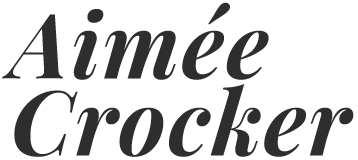
Tattoo, Secrets of a Strange Art by Albert Parry

There are 41 editions of Albert Parry’s Garrets and Pretenders published between 1933 and 2013 and it is currently held by over 1200 libraries worldwide
Albert Parry authored two landmark books in 1933 still admired and studied today — Garrets and Pretenders: A History of Bohemianism in America and Tattoo, Secrets of a Strange Art as Practiced by the Natives of the United States. Parry’s tattoo book caused a sensation when it was published. Many reviews and excerpts were printed in magazines such as Esquire, American Mercury, Modern Mechanic and Scientific American.
Most of these reviews focused on Parry’s startling assertion that tattooing and sex were connected. Scientific American wrote:
The author’s subhead of this curious and intriguing book at once attracts attention: “Secrets of a Strange Art as Practiced by the Natives of the United States.” Beautifully illustrated with three color-plates and numerous half-tone reproductions, the book accomplished its avowed purpose of getting under the skin of the skin game. The reasons for having tattoo applied to one’s person are proved to be essentially psychological, whatever the expressed reason of the tattooee may be. Mr. Parry, supported by the assertions of authorities in the field of psychology, shows that there is a close link between tattooing and sex. There is a definite erotic basis for the practice of the art, and the author follows the line of reasoning with skill and tact. Such is the subject matter that parts of the book becomes hilariously humorous, but never gets out of hand, and are always done with good taste in keeping with the vast amount of serious research that preceded the writing of the volume. If you have ever been tattooed and it is shown that a surprisingly large number of men and women have – or have ever seen examples of the art, you will want to read this book both for its deep human interest and the amazing information that is revealed. There is a valuable chapter on the removal of tattoo marks.
Samuel Steward, aka Phil Andros, the poet, novelist, university professor, pornographer and Hells Angels official tattoo artist wrote:
Parry, writing in 1933, was one of the first devotes of Freud, and was Freudian terminology to tattooing. He interviewed a vast number of tattooists then alive, and like many journalists, accepted the tales they told him without any attempt at verification. His book so infuriated the few tattoo artists literate enough to read it and understand what he was saying that one and all denounced him for doing their art a great disservice. The fact remains that time has proved a large number of Parry’s conclusions to be sound, and his book remains a milestone in the general literature of tattooing.

Samuel O’Reilly patented the first electric tattoo machine
Parry names Aimée Crocker American history’s best known “woman of fashion” to be tattooed along with Clara Ward (later Princesse de Caraman-Chimay) and Mrs. George Cornwallis West (later Lady Randolph Churchill, Winston Churchill’s mom). Aimée received tattoos from Japanese master Hori Toyo, partner of the great Samuel O’Reilly, who patented the first electric “tattaugraph” machine. Parry profiles O’Reilly as well as the great and honorable Japanese God of Tattoo Artists Hori Chiyo, who Aimée met in 1892 and also profiles in a chapter of her 1936 memoirs And I’d Do It Again.
Born Albert Paretzky in in Rostov-on-Don, Russia, Parry was professor of Russian civilization and language at Colgate University. After the Russian Revolution he became a sailor in the Russian Merchant Marine and emigrated in 1921 to the United States, settling in New York City’s Greenwich Village. There he wrote for periodicals like The Nation, The Saturday Review, The Outlook, The Bookman and Coronet Magazine. He was an early contributor to the “reefer madness” craze with his article “The Menace of Marihuana” in the December 1935 issue of American Mercury.
Parry earned his PhD in history in 1938 at the University of Chicago. He taught there briefly and at Northwestern University. He was editor of Consolidated Book Publishers and a research director of radio broadcasts for The Chicago Sun. Parry founded Colgate University’s Russian studies program, the first undergraduate program of its kind in America. The Bohemian and tattoo expert later in his career wrote about Russian rockets and missiles and a comprehensive book about terrorism called Terrorism: from Robespierre to Arafat. He died in 1992 in Los Angeles at age 91.
Purchase Garrets and Pretenders: Bohemian Life in America from Poe to Kerouac by Albert Parry

